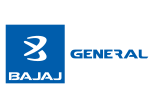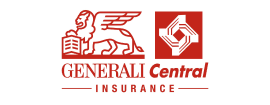Endowment versus Equities
Investments are necessary for growing one’s money and overall wealth in life. But, investing can be complicated. It is important to learn the risks and consequences of investments before putting in the money. The meaning of equity and endowment plans, as well as their differences, are being discussed ahead.
What is Equity?
Table of Contents
The term equity is also used interchangeably with stocks and refers to ownership in a company. The type of ownership in a company after settling the debts is called equity. One may invest in equity through ULIPs or mutual funds. There is a significant benefit of investing in equity stocks through mutual funds because a fund manager handles all investments. This implies that personal knowledge of the equity market is not required.

What are Endowment Plans?
An endowment plan is a type of life insurance that allows the assured and their family to receive financial support and also save money. The person assured in an endowment plan either gets a lump sum at the end of the duration of the plan, or their beneficiaries receive the sum in case of the death of the assured.
Differences Between Endowment Plans and Equities
There are many differences between an endowment plan and equity, such as -
Investment Risk
Equity investments can be made through - direct trading, ULIPs, and mutual funds. In direct trading, the returns are dependent on the market performance. In mutual funds, the returns depend on the performance and knowledge of the fund manager. ULIPs are the least risky of the three because they offer a balance between debt and equity investments. Also, you may receive a built-in life insurance cover.
Endowment plans are less risky than equity investments because a fixed sum assured is received at the end of plan tenure. A bonus may also be provided to the assured. Also, endowment plans are beneficial as savings and insurance both for the nominees of the assured.
Tenure of Investment
The second difference is based on the tenure for which one may invest in endowment plans or equity. In equity, there is a lock-in period of five years in ULIPs. Sometimes, mutual fund schemes may also have a lock-in period of 3-5 years.
Endowment plans are for fixed tenures, and the duration depends on the plan and the term of premium being chosen by the assured.
Investment Instrument
There are three instruments used for investing in equity - direct trading, ULIPs, and mutual funds.
There are also multiple instruments or types of endowment plans, such as guaranteed endowment, low-cost endowment, with a profit or without profit endowment, and unit-linked endowment.
Investment Purpose
The purpose of equity investment is to generate wealth and achieve capital gains on the investment. It has more risk and hence, more returns. Wealth in equity creates through fluctuations in the market dividends.
Investments in endowment plans are made for stable savings, low-risk investing, and fixed returns. Also, in case of the demise of assured, the family can be insured.
Conclusion
Equity and endowment plans are both beneficial investment options with pros and cons. The purpose of investing in these instruments is almost the opposite, as one is intended for safety and the other for creating wealth through risk-taking. Hence, investments in either or both of these options should be made after due thought and with caution.
Also read: Relevance Of CSR When Buying A Life Insurance
Comparing The Benefits And Disadvantages Of Term Life Insurance



























































